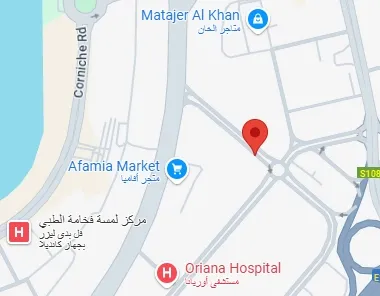In today’s interconnected world, having a bilingual website is not just a nice-to-have—it’s a business necessity, especially in regions like the United Arab Emirates (UAE) and other Middle Eastern countries. With a diverse population that includes both native Arabic speakers and fluent English users, businesses must consider a bilingual website design serving Arabic and English users to effectively reach their audience and stay competitive.
This article explores the importance, challenges, and best practices of bilingual website design serving Arabic and English users, with a special focus on SEO, user experience, and cultural nuances in the Middle East.
Why Bilingual Website Design Is Essential in the Middle East
The UAE, Saudi Arabia, Qatar, and other Gulf countries have a unique demographic: while Arabic is the official language, English is widely used for business, education, and tourism. A bilingual website design serving Arabic and English users ensures that both local and international audiences can access your content effortlessly.
Key Benefits:
Increased Reach: Tap into a broader audience, both native and expat.
Cultural Relevance: Respect and address the linguistic preferences of diverse users.
Improved SEO: Rank better in both Arabic and English search results.
Enhanced Trust and Credibility: Users are more likely to engage with a website in their preferred language.

Understanding the Differences Between Arabic and English Web Design
Designing a bilingual website serving Arabic and English users isn’t just about translating words—it involves aligning with different design philosophies, text direction, and user expectations.
Directionality:
Arabic is a right-to-left (RTL) language.
English is a left-to-right (LTR) language.
This impacts layout, navigation menus, icons, and alignment. A truly effective bilingual website design serving Arabic and English users adapts to each language’s flow without compromising aesthetics or usability.
Typography:
Arabic fonts differ greatly from Latin fonts. Designers must choose fonts that are not only visually compatible but also load quickly across devices.
Cultural Considerations:
Colors, symbols, and even imagery can have different meanings. What appeals to an English-speaking user may not resonate with an Arabic-speaking one. A well-crafted bilingual website design serving Arabic and English users takes cultural context seriously.
Best Practices for Bilingual Website Design Serving Arabic and English Users
1. Use Language Toggle That’s Easy to Find
The most basic yet crucial element of bilingual website design serving Arabic and English users is providing a visible and intuitive language switch. Place the toggle at the top right or left corner depending on the default language.
Use clear language labels like “EN | AR” instead of flags.
Ensure that switching languages doesn’t reset user progress (e.g., shopping carts, forms).
2. Create Separate URLs or Subdirectories for Each Language
For SEO and user clarity, it’s best to separate language content:
Example: yourdomain.com/en/ and yourdomain.com/ar/
Avoid using machine translation. Use native speakers or professional translation services to ensure accuracy and cultural relevance.
Search engines reward websites that treat each language version as unique content, making this a smart move for long-term performance.
3. Adjust Layout Based on Language Direction
One of the trickiest aspects of bilingual website design serving Arabic and English users is switching between RTL and LTR layouts.
Key adjustments include:
Aligning text and navigation accordingly.
Mirroring icons and sliders.
Using CSS to detect and apply direction (dir=”rtl” or dir=”ltr”).
Make sure that each version feels like a native-language site rather than a mirrored copy.
4. Optimize for Mobile
Mobile traffic dominates in the UAE and across the Middle East. Ensure your bilingual website design serving Arabic and English users is fully responsive on all devices.
Pay extra attention to:
Menu accessibility
Font readability in both scripts
Load time (especially for fonts and media files in both languages)
5. Localize Content, Don’t Just Translate
Translation is about words. Localization is about meaning. If you want your bilingual website design serving Arabic and English users to truly connect, localize the content for each audience.
Examples:
Use local currency and date formats.
Reference region-specific holidays, laws, and behaviors.
Adapt tone and marketing messages.
Common Challenges in Bilingual Website Design Serving Arabic and English Users
Content Consistency
Maintaining consistent messaging across both languages can be tough, especially if content is updated frequently. Use content management systems (CMS) that support multilingual workflows like WordPress with WPML or Drupal with i18n.
Design Complexity
Switching between RTL and LTR can lead to layout issues if not handled properly. It’s essential to test every page in both languages on different devices.
SEO Management
One of the biggest concerns in bilingual website design serving Arabic and English users is duplicate content and SEO confusion.
Solutions:
Use hreflang tags to tell search engines which version is for which audience.
Create unique metadata (title, description, alt tags) for each language.
Optimize keywords for both Arabic and English searches.
SEO Strategies for Bilingual Website Design Serving Arabic and English Users
Effective bilingual website design serving Arabic and English users is tightly linked to SEO. Here’s how to boost visibility:
Arabic Keywords: Don’t just translate English keywords. Use Arabic keyword research tools to find high-traffic phrases.
Meta Descriptions: Write compelling meta descriptions in both languages to improve click-through rates.
Structured Data: Implement structured data markup for multilingual content.
Alt Text: Describe images in both Arabic and English where applicable, especially for image-heavy websites.
Google and other search engines will reward your effort with better visibility in both language markets.

Case Studies: Success Stories in the UAE
Many successful businesses in the UAE have implemented bilingual website design serving Arabic and English users to grow their market share.
Examples:
Government portals: Like UAEPass and MOHRE, which offer seamless switching between Arabic and English.
E-commerce platforms: Noon.com and Carrefour UAE cater to bilingual users with tailored content and interfaces.
Tourism and hospitality websites: Hotel chains and travel agencies benefit from increased bookings by speaking the language of both locals and tourists.
These examples show how thoughtful bilingual design leads to better engagement, conversion, and brand loyalty.
Final Thoughts
Creating a bilingual website design serving Arabic and English users is more than just a design decision—it’s a strategic investment. In culturally diverse regions like the UAE, offering content in both Arabic and English shows that your brand values inclusivity, understands local dynamics, and is ready to serve a wide audience.
By following best practices in UX design, SEO, localization, and mobile optimization, you can build a website that doesn’t just work—it connects.
If you’re building or redesigning your website, make bilingual website design serving Arabic and English users a core part of your strategy. It’s the key to unlocking deeper engagement and broader reach in one of the world’s most exciting digital markets.



